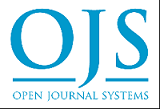Gambaran efikasi diri dan perawatan diri pada pasien gagal jantung
DOI:
https://doi.org/10.33024/hjk.v18i7.414Keywords:
Efikasi Diri, Gagal Jantung, Perawatan DiriAbstract
Background: Heart failure is one of the cardiovascular diseases which is a major health problem in western countries which is increasing in line with population growth and increasing life expectancy. Self-efficacy is an individual's belief in his ability to react to certain situations. Self-care is a decision taken by the patient himself or with his family, so that he is able to overcome his illness and maintain his functional abilities and achieve well-being.
Purpose: To determine the description of self-efficacy and self-care behavior in heart failure patients.
Method: Quantitative descriptive study, conducted at the Heart Polyclinic of the Regional General Hospital. Dr. Pirngadi Medan. The sampling technique used purposive sampling and the Slovin formula, the number of samples used was 84 respondents. The independent variables are self-efficacy and self-care, while the dependent variable is heart failure patients. Data collection techniques using questionnaires. Self-efficacy using the Cardiac Self-Efficacy Scale questionnaire or (CSE scale). Self-care was obtained through the self care of heart failure index (SCHF) questionnaire which has been modified into Indonesian. The New York Heart Association (NYHA) functional classification was categorized as class I to IV. Univariate data analysis was used in the form of frequency distribution.
Results: This study shows that the majority of respondents have less self-efficacy 54 (64.4%). Most respondents had poor self-care 48 (57.2%). New York Heart Association (NYHA) classification is mostly in the NYHA level II category 55 (65.4%).
Conclusion: High self-efficacy in heart failure patients can increase motivation to do physical activity, resulting in reduced barriers to physical activity and encouraging patients to do more physical activity. Self-care needs to be practiced to cope with the disease, maintain functional ability, and achieve well-being.
Suggestion: Hoped that heart failure patients' self-awareness will increase self-efficacy to improve self-care, and family support is expected to help patients carry out self-care. Increasing the self-efficacy of heart failure patients, it will help patients carry out self-care.
Keywords: Heart Failure; Self Care; Self Efficacy.
Pendahuluan: Gagal jantung merupakan salah satu dari penyakit kardiovaskuler yang menjadi masalah kesehatan utama di negara-negara barat yang meningkat sejalan dengan pertambahan populasi dan meningkatnya usia harapan hidup. Efikasi diri merupakan keyakinan individu terhadap kemampuannya dalam bereaksi terhadap situasi tertentu. Perawatan diri merupakan suatu keputusan yang diambil oleh pasien sendiri atau bersama keluarganya, sehingga mampu mengatasi penyakitnya dan mempertahankan kemampuan fungsionalnya serta mencapai kesejahteraan.
Tujuan: Untuk mengetahui gambaran efikasi diri dan perilaku perawatan diri pada pasien gagal jantung.
Metode: Penelitian deskriptif kuantitatif, dilakukan di Poliklinik Jantung Rumah Sakit Umum Daerah. Dr. Pirngadi Medan. Teknik pengambilan sampel menggunakan purposive sampling dan rumus slovin, jumlah sampel yang digunakan sebanyak 84 responden. Variabel independen adalah efikasi diri dan perawatan diri, sedangkan variabel dependen pasien gagal jantung. Teknik pengumpulan data menggunakan kuesioner. Efikasi diri menggunakan kuesioner Cardiac Self-Efficacy Scale atau (CSE scale). Perawatan diri didapatkan melalui kuesioner self care of heart failure index (SCHF) yang telah dimodifikasi kedalam Bahasa Indonesia. Klasifikasi fungsional New York Heart Association (NYHA) dikategorikan kelas I sampai IV. Analisis data yang digunakan univariate dalam bentuk distribusi frekuensi.
Hasil: Penelitian ini menunjukan bahwa mayoritas responden memiliki efikasi diri yang kurang 54 (64.4%). Sebagian besar responden memiliki perawatan diri yang kurang 48 (57.2%). Klasifikasi New York Heart Association (NYHA) sebagian besar masuk dalam kategori NYHA tingkat II 55 (65.4%).
Simpulan: Efikasi diri yang tinggi pada pasien gagal jantung dapat meningkatkan motivasi melakukan aktivitas fisik, sehingga mengurangi hambatan aktivitas fisik dan mendorong pasien untuk melakukan aktivitas fisik yang lebih banyak. Perawatan diri perlu dilakukan untuk mengatasi penyakit, mempertahankan kemampuan fungsional, dan mencapai kesejahteraan.
Saran: Diharapkan kesadaran diri pasien gagal jantung untuk meningkatkan efikasi diri guna meningkatkan perawatan diri, dan diharapkan dukungan keluarga untuk membantu pasien dalam melaksanakan perawatan diri. Dengan meningkatkan efikasi diri pasien gagal jantung, akan membantu pasien dalam melaksanakan perawatan diri.
Kata Kunci: Efikasi Diri; Gagal Jantung; Perawatan Diri.
References
Akhmad, A. N., Primanda, Y., & Istanti, Y. P. (2016). Kualitas hidup pasien Gagal Jantung Kongestif (GJK) berdasarkan karakteristik demografi. Jurnal Keperawatan Soedirman (The Soedirman Journal of Nursing), 11(1), 27-34.
Aggelopoulou, Z., Fotos, N. V., Chatziefstratiou, A. A., Giakoumidakis, K., Elefsiniotis, I., & Brokalaki, H. (2017). The level of anxiety, depression and quality of life among patients with heart failure in Greece. Applied Nursing Research, 34, 52-56.
Arista, R. (2020). Pengaruh Psikoedukasi Media Video Terhadap Tingkat Kecemasan dan Self Efficacy Pasien Tuberkulosis Dalam Menjalani Pengobatan di Poli Paru Center RSUD Cilacap (Doctoral dissertation, Universitas Airlangga).
Fatimah, F., Widyastutik, O., & Suwarni, L. (2019). Efektivitas media audiovisual (video) terhadap peningkatan pengetahuan dan sikap kelompok masyarakat tentang program G1R1J. Jurnal Kesmas (Kesehatan Masyarakat) Khatulistiwa, 6(2), 44-51.
Harigustian, Y., Dewi, A., & Khoiriyati, A. (2016). Gambaran Karakteristik Pasien Gagal Jantung Usia 45–65 Tahun di Rumah Sakit Pku Muhammadiyah Gamping Sleman. IJNP (Indonesian Journal of Nursing Practices), 1(1), 55-60.
Hasanah, M. A., Makhfudli, M., & Wahyudi, A. S. (2018). Hubungan dukungan keluarga dengan efikasi diri penderita Tuberculosis Multidrug Resistant (TB-MDR) di poli TB-MDR RSUD IBNU Sina Gresik. Jurnal kesehatan, 11(2), 72-85.
Heidenreich, P. A., Bozkurt, B., Aguilar, D., Allen, L. A., Byun, J. J., Colvin, M. M., & Yancy, C. W. (2022). 2022 AHA/ACC/HFSA guideline for the management of heart failure: executive summary: a report of the American College of Cardiology/American Heart Association Joint Committee on Clinical Practice Guidelines. Circulation, 145(18), e876-e894.
Klompstra, L., Jaarsma, T., & Strömberg, A. (2018). Self-efficacy mediates the relationship between motivation and physical activity in patients with heart failure. Journal of Cardiovascular Nursing, 33(3), 211-216.
Kristinawati, B., & Khasanah, R. N. (2019). Hubungan Pelaksanaan Edukasi dengan Kemampuan Self Care Management Pasien Gagal Jantung. In Prosiding University Research Colloquium (pp. 496-503).
Lewis, K. R. (2019). Evaluation of Communication & Teamwork Implementing Team STEPPS for a Medical-Surgical Unit. Chamberlain University-Chamberlain College of Nursing.
Okatiranti, O., & Amelia, F. (2017). Hubungan Self Efficacy dengan Perawatan Diri Lansia Hipertensi Studi Kasus: Salah Satu Puskesmas Di Kota Bandung. Jurnal Keperawatan BSI, 5(2).
Ontorael, R., Wantasen, A. S., & Rondonuwu, A. B. (2012). Kondisi ekologi dan pemanfaatan sumberdaya mangrove di Desa Tarohan Selatan Kecamatan Beo Selatan Kabupaten Kepulauan Talaud. Jurnal ilmiah platax, 1(1), 07-11.
Prabowo, D. Y. B., Sujianto, U., & Ropyanto, C. B. (2019). Pengaruh latihan efikasi diri terhadap self care pasien gagal jantung kongestif (Doctoral dissertation, Diponegoro University).
Prihatiningsih, D., & Sudyasih, T. (2018). Perawatan diri pada pasien gagal jantung.
Purnamawati, D. A., Arofiati, F., & Relawati, A. (2018). Pengaruh Supportive-Educative System terhadap Kualitas Hidup pada Pasien Gagal Jantung. Jurnal Mutiara Medika, 18(2), 41-44.
Riegel, B., Jaarsma, T., Lee, C. S., & Strömberg, A. (2019). Integrating symptoms into the middle-range theory of self-care of chronic illness. Advances in nursing science, 42(3), 206-215.
Riskamala, G., & Hudiyawati, D. (2020). Gambaran Self-Efficacy Pada Pasien Gagal Jantung.S1, Universitas Muhammadiyah Surakarta
Simanjuntak, A. L. T. (2019). Hubungan Self Care Terhadap Kualitas Hidup Pasien Gagal Jantung di RSUP Haji Adam Malik (Doctoral dissertation, Universitas Sumatera Utara).
Suherwin, S. (2018). Hubungan Usia, Jenis Kelamin Dan Riwayat Penyakit Dengan Kejadian Penyakit Jantung Koroner Di Instalasi Gawat Darurat Rumahsakit Tk. Ii Dr. Ak. Gani Palembang Tahun 2016. Jurnal'Aisyiyah Medika, 1(1).
Toyyibah, D., & Adi, G. S. (2021). Gambaran perilaku perawatan diri pada pasien gagal jantung. In Prosiding Seminar Informasi Kesehatan Nasional (pp. 43-49).
Tsuyuki, R. T., Lockwood, E. E., Shibata, M. C., Simpson, S. H., Tweden, K. L., Gutierrez, R., & Fradette, M. (2019). A randomized trial of video-based education in patients with heart failure: The congestive heart failure outreach program of education (COPE). CJC open, 1(2), 62-68.
Udjianti, W. J. (2010). Keperawatan kardiovaskular. Jakarta: Salemba Medika, 2
Vos, T., Lim, S. S., Abbafati, C., Abbas, K. M., Abbasi, M., Abbasifard, M., & Bhutta, Z. A. (2020). Global burden of 369 diseases and injuries in 204 countries and territories, 1990–2019: a systematic analysis for the Global Burden of Disease Study 2019. The lancet, 396(10258), 1204-1222.
Wahyuni, A., & Kurnia, O. S. (2014). Hubungan Self Caredan Motivasi dengan Kualitas Hidup Pasien Gagal Jantung. Jurnal Keperawatan Padjadjaran, 2(2).
Wantiyah, S. R., & Gayatri, D. (2010). Analisis Faktor-Faktor Yang Mempengaruhi Efikasi Diri Pasien Penyakit Jantung Koroner Dalam Konteks Asuhan Keperawatan Di RSUD Dr. Soebandi Jember (Doctoral dissertation, Tesis. FIKUI).
Widadi, S. Y., Ramdani, H. T., & Ibrahim, D. Y. (2024). Gambaran Kualitas Hidup dan Perawatan Diri Pada Pasien Gagal Jantung Kongestif Rawat Inap Di Rumah Sakit dr Slamet Garut. Innovative: Journal Of Social Science Research, 4(3), 5739-5763.
World Health Organization. (2016). WHO Global report on diabetes. Diakses dari: http://docs.dpaq.de/10605-diabetes_who_embargoed-who-global-report-on-diabetes.pdf









